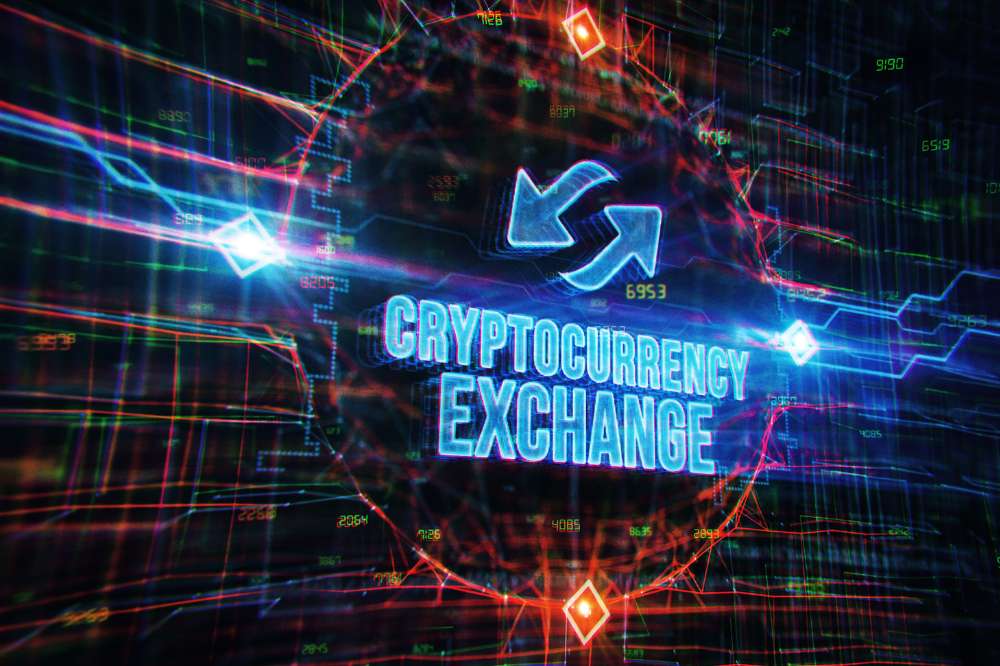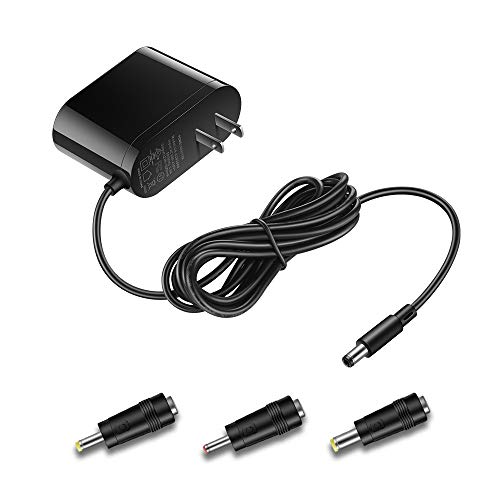In the dynamic realm of cryptocurrencies, innovation continues to drive the evolution of financial transactions. One notable advancement that has gained traction is the concept of atomic swap crypto transactions.
These transactions represent a groundbreaking method for peer-to-peer exchanges of digital assets without the need for intermediaries.
In this article, we delve into the intricacies of atomic swap transactions, exploring their significance in the cryptocurrency space and how they revolutionize the way we trade digital assets.
Understanding Atomic Swap Crypto Transactions

- Compatible with major cable internet providers including Xfinity, Spectrum, Cox and more. NOT compatible...
- [Compatibility] 12V Power Supply Adapter Compatible with Netgear, Linksys, Asus,Motorola, Motorola/Arris...
Atomic swaps, also known as atomic cross-chain trading, are a mechanism that allows for the exchange of cryptocurrencies directly between two parties without relying on a trusted third party or centralized exchange. This process enables seamless peer-to-peer transactions across different blockchain networks, providing you with greater control, privacy, and security over your assets.
Atomic swaps leverage smart contracts, self-executing contracts with the terms of the agreement directly written into code, to facilitate secure and trustless exchanges between parties.
These smart contracts lock the funds of both parties involved in the transaction and ensure that the exchange occurs atomically, meaning that either both parties receive the agreed-upon assets, or neither party does.
The process of an atomic swap typically involves several steps:
- Initiation: The process begins with one party proposing a trade to another party, specifying the assets they wish to exchange and the exchange rate.
- Verification: Both parties verify the terms of the proposed trade and agree to proceed with the transaction.
- Locking of Funds: Each party locks their respective cryptocurrency funds in a multi-signature smart contract, ensuring that neither party can access the funds until the swap is completed.
- Exchange: The atomic swap protocol executes the exchange, transferring the locked funds from one party to the other in a single, seamless transaction.
- Completion: Once the exchange is completed, both parties receive the agreed-upon assets, and the smart contract releases the locked funds to their respective recipients.
Atomic swaps can occur either on-chain, where the entire transaction is recorded directly on the blockchain, or off-chain, where the transaction details are communicated privately between the parties involved before settling on the blockchain. Both on-chain and off-chain atomic swaps offer unique advantages and are suited to different use cases and blockchain networks.
In the next section, we will explore the benefits of atomic swaps and how they enhance the efficiency and security of cryptocurrency transactions.
How Atomic Swaps Work?
Atomic swaps operate on the principle of smart contracts, which are self-executing contracts with the terms of the agreement directly written into code. These contracts automatically enforce and execute the terms of the agreement when predefined conditions are met, without the need for intermediaries.
The process of an atomic swap typically involves the following steps:
- Initiating the Swap: The process begins with two parties, each owning different cryptocurrencies and wanting to exchange them with each other. Let’s say Party A wants to exchange Bitcoin for Litecoin, while Party B wants to exchange Litecoin for Bitcoin.
- Creating Hashed Time-Locked Contracts (HTLCs): Each party creates a hashed time-locked contract (HTLC) on their respective blockchain. An HTLC is a type of smart contract that locks funds for a specified period and can only be redeemed with a preimage, or secret, within a specific timeframe. These contracts ensure that neither party can abscond with the funds without fulfilling their end of the agreement.
- Exchanging Hashed Secrets: Both parties exchange hashed secrets, which are cryptographic representations of the secrets they will use to unlock the HTLCs. This step ensures that each party has the necessary information to unlock the other party’s HTLC.
- Verification and Execution: Once both parties have received the hashed secret from the other party, they verify its authenticity. If the hashed secret matches the one they provided, they reveal the preimage, unlocking the HTLC and claiming the exchanged cryptocurrency. If either party fails to reveal the preimage within the specified timeframe, the funds are refunded to their original owners.
Benefits of Atomic Swaps
Atomic swaps offer several compelling benefits over traditional cryptocurrency exchanges:
- Enhanced Security: Atomic swaps eliminate the need for trusted third parties or intermediaries, reducing the risk of hacking, fraud, and theft associated with centralized exchanges. Transactions are executed directly between parties using cryptographic protocols, ensuring the security and integrity of the exchange process.
- Privacy Preservation: Atomic swaps preserve the privacy and confidentiality of transactions by eliminating the need to disclose sensitive information to third parties. Since transactions occur directly between participants, there is no centralized authority collecting and storing user data, reducing the risk of privacy breaches and identity theft.
- Decentralization: By enabling peer-to-peer exchanges without the involvement of intermediaries, atomic swaps promote decentralization in the cryptocurrency ecosystem. Participants retain full control over their funds and transactions, mitigating the risks of censorship, manipulation, and coercion associated with centralized exchanges.
- Interoperability: Atomic swaps facilitate seamless asset transfer and communication between blockchain networks, promoting interoperability and compatibility across disparate platforms. This interoperability enables users to exchange assets across different blockchains without relying on centralized intermediaries or complex exchange mechanisms.
- Cost Efficiency: Atomic swaps eliminate the need for transaction fees and trading commissions charged by centralized exchanges, reducing the overall cost of cryptocurrency transactions. Participants can exchange assets directly with each other without incurring additional fees, resulting in cost savings and improved efficiency.
These benefits make atomic swaps an attractive option for cryptocurrency traders and investors seeking a secure, private, and decentralized alternative to traditional exchange platforms.
As atomic swap technology continues to evolve and gain adoption, it has the potential to revolutionize the way cryptocurrencies are traded and exchanged in the blockchain ecosystem.
Limitations of Atomic Swaps
While atomic swaps offer numerous benefits, they also present certain limitations and challenges:
- Technical Complexity: Atomic swaps require users to have a certain level of technical proficiency and familiarity with cryptocurrency wallets and protocols. The process involves multiple steps, including creating and broadcasting transactions, verifying cryptographic signatures, and coordinating with counterparties, which may pose challenges for less experienced users.
- Liquidity Constraints: Atomic swaps rely on finding counterparties willing to engage in the desired asset exchange, which can be challenging in markets with limited liquidity or trading pairs. Low liquidity may result in delays or difficulties in executing atomic swaps, particularly for less popular or niche cryptocurrencies.
- Speed and Efficiency: While atomic swaps offer trustless and decentralized exchanges, they may sometimes be slower than centralized exchange platforms. The process of conducting multiple on-chain transactions and waiting for confirmations can lead to longer settlement times compared to centralized exchanges, which may impact user experience, especially during periods of high network congestion.
Despite these limitations, atomic swaps represent a significant advancement in decentralized exchange technology, offering users greater control, privacy, and security over their cryptocurrency transactions.
As the technology continues to evolve and improve, addressing these challenges will be crucial in unlocking the full potential of atomic swaps for the broader cryptocurrency ecosystem.
Future Outlook and Conclusion
Looking ahead, atomic swap crypto transactions are poised to play a significant role in shaping the future of decentralized finance (DeFi) and the broader cryptocurrency ecosystem. As blockchain technology continues to evolve and mature, atomic swaps offer a promising solution for enhancing liquidity, interoperability, and user autonomy in the digital asset space.
Atomic swaps represent a groundbreaking innovation that enables trustless and decentralized asset exchanges across different blockchain networks. Despite certain limitations and challenges, the benefits of atomic swaps, including enhanced security, privacy, and interoperability, position them as a key driver of innovation and adoption in the cryptocurrency space.
As technology advances and becomes more widely adopted, atomic swaps have the potential to revolutionize the way cryptocurrencies are traded, transferred, and exchanged, paving the way for a more inclusive, efficient, and decentralized financial system.





